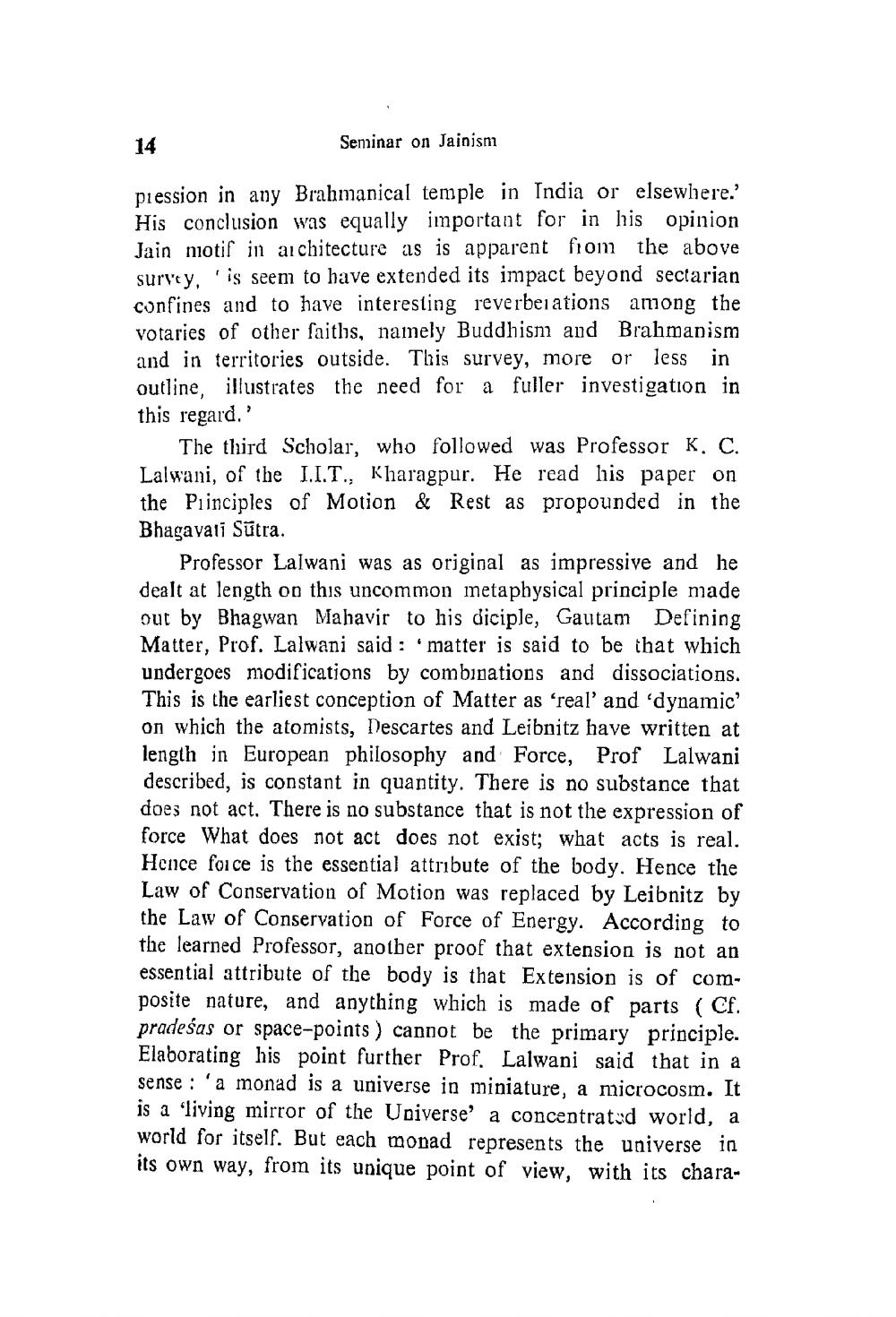________________
14
Seminar on Jainism
piession in any Brahmanical temple in India or elsewhere.' His conclusion was equally important for in his opinion Jain niotif in ai chitecture as is apparent from the above survey, 'is seem to have extended its impact beyond sectarian confines and to have interesting reverberations among the votaries of other faiths, namely Buddhism and Brahmanism and in territories outside. This survey, more or less in outline, illustrates the need for a fuller investigation in this regard.'
The third Scholar, who followed was Professor K. C. Lalwani, of the I.I.T., Kharagpur. He read his paper on the Principles of Motion & Rest as propounded in the Bhagavati Sütra.
Professor Lalwani was as original as impressive and he dealt at length on this uncommon metaphysical principle made out by Bhagwan Mahavir to his diciple, Gautam Defining Matter, Prof. Lalwani said : matter is said to be that which undergoes modifications by combinations and dissociations. This is the earliest conception of Matter as 'real' and 'dynamic on which the atomists, Descartes and Leibnitz have written at length in European philosophy and Force, Prof Lalwani described, is constant in quantity. There is no substance that does not act. There is no substance that is not the expression of force What does not act does not exist; what acts is real. Hence force is the essential attribute of the body. Hence the Law of Conservation of Motion was replaced by Leibnitz by the Law of Conservation of Force of Energy. According to the learned Professor, another proof that extension is not an essential attribute of the body is that Extension is of composite nature, and anything which is made of parts (Cf. pradeśas or space-points ) cannot be the primary principle. Elaborating his point further Prof. Lalwani said that in a sense : 'a monad is a universe in miniature, a microcosm. It is a living mirror of the Universe' a concentratöd world, a world for itself. But each monad represents the universe in its own way, from its unique point of view, with its chara




